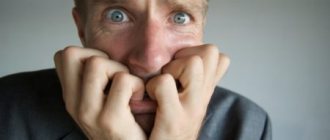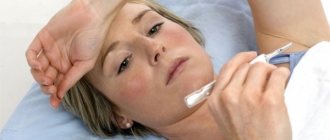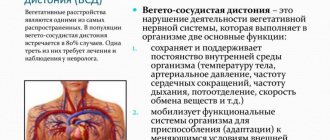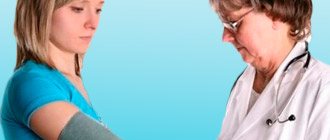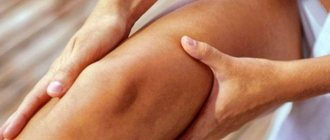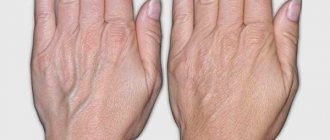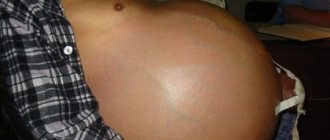Features of the development of the disease
Torsion dystonia is a neurological disorder that causes problems with muscle tone, uncontrolled contractions in which the patient assumes abnormal postures. This disease is rare, but highly complex. Deforming muscular dystonia causes pain and requires the attention of doctors.
Only 3 out of 100 patients experience this disease in their youth . Over time, the disorder progresses, symptoms and stages change. The eyelids close voluntarily, the muscles on the face contract, speech function and the swallowing reflex are impaired.
The forms of the disorder are determined by the affected area:
- Local. Fragmented damage to muscle tissue occurs.
- Segmental. Spasms spread near the muscles located.
- Generalized forms of the disease. Muscle tissues on the back, pelvis, arms, and body are affected.
- Severe pain occurs when the disorder is localized in a specific place.
The severity of the symptoms that arise is determined by the location of the muscle damage. Often, one after another, the forms spread to each other, causing damage to an increasingly larger part of the muscle tissue. In this condition, the patient feels as if he is breaking or twisting.
Treatment of muscular dystonia
To treat muscular dystonia, official medicine prescribes quite strong pharmacological drugs. They have a negative impact on human health. Dopaminergic and anticholinergic substances stimulate the muscle fiber to increase susceptibility to conducted nerve impulses. In this case, the smooth muscles of the vascular bed are significantly affected. After discontinuation of treatment, a secondary form of vascular insufficiency is often observed. 3GABAergic drugs play the role of neurotransmitter substitutes, so their administration often leads to the fact that the natural process of their production in the human body is completely disrupted. Lifelong replacement therapy may be required.
At the same time, absolutely safe and effective treatment of muscular dystonia is possible using manual therapy techniques. A properly developed course of osteopathy, reflexology, massage and physical therapy can quickly and effectively restore the transmission of nerve impulses and restore health to the baby and adult.
Causes
The disease has two forms of occurrence: hereditary and symptomatic. Symptomatic cases are characterized by the following provoking factors: oncology, tick bites and the development of encephalitis, cerebral palsy, post-traumatic complications.
This disease has not been studied in more detail. Medicine does not consider more obvious reasons for the occurrence of such disorders. Scientists accurately identify several forms of this disease, the appearance of which is determined by several factors .
The autosomal dominant type of the disease appears in adulthood, the symptoms are not too difficult to tolerate. Torsion dystonia appears due to diabetes mellitus, difficult childbirth, poor heredity, central nervous system pathologies, vascular problems, intoxication, toxoplasmosis, cerebral palsy, etc. The hereditary variety of the disease is diagnosed less frequently; manifestations in such a situation occur in 2-3 generations in the same family or in a situation where the parents of the children are too closely related.
Reasons for development
The pathogenesis of torsion dystonia has been poorly studied. The main cause of the pathology is considered to be a hereditary predisposition. Among other factors that can cause damage
subcortical structures of the brain, the main ones can be distinguished:
- inflammatory malfunctions of the nervous system;
- diseases caused by parasites (toxoplasmosis, giardiasis);
- disruptions in cerebral (brain) blood flow;
- intoxication;
- oncological diseases;
- degeneration of brain tissue;
- injuries received during childbirth or shortly after;
- cerebral palsy.
Failures associated with the production of dopamine are also considered one of the causes of torsion dystonia. In people with this disease, the level of the neurotransmitter is significantly higher than normal.
Symptoms
In most situations, the disorder is acute. Complications of symptoms and the appearance of complications occur in the shortest possible time. The chronic form occurs in a small number of patients. At an early age, torsion dystonia manifests itself as follows: convulsions periodically appear, gait changes, and spastic torticollis occurs.
As the patient gets older, the disorder progresses in an acute form, with attacks occurring unexpectedly. Let's look at the symptoms: the appearance of primary generalized spasms, forced postures, involuntary gestures.
Under the influence of the following factors, the patient's condition is aggravated: stress, physical and intellectual overload, bad habits, drinks containing caffeine and other stimulants.
After rest or sleep, the symptoms decrease. Medicines prescribed by a therapist help improve the condition.
Classification of pathology
Depending on the etiological factor, the disease is divided into the following types:
- Idiopathic torsion dystonia (hereditary) is transmitted in a dominant and recessive manner. In the first case, the pathology is detected after 2-3 generations, and in the second - 4-5.
- Symptomatic torsion dystonia occurs due to various diseases or brain damage caused by neoplasm, encephalitis, trauma, or cerebral palsy.
According to the degree of damage, the pathological process is classified as follows:
- The local form is characterized by damage to individual muscle tissues. For example, if torsion dystonia concerns the neck area, then spastic torticollis occurs. This type is considered the most common.
- With the segmental variety of the disease, spasm of several nearby muscles occurs.
- The generalized form of torsion dystonia affects large areas of the body (torso, limbs, back).
Based on the age at which symptoms first appeared, the disease is divided into the following types:
- Late onset in people over 30 years of age initially manifests as spasms of the neck and one of the upper limbs. Limited hyperkinesis is often observed.
- Early onset is typical for young people under 20-30 years of age. Initially, the muscles of one of the limbs are affected and other areas are gradually involved.
Diagnostics
If signs characteristic of torsion dystonia are identified, patients will have to contact neurologists. The doctor conducts a survey and examines the patient. Much attention will have to be paid to muscle tone while maintaining their intensity and the absence of problems caused by increased sensitivity.
Diagnostic tasks include distinguishing torsion dystonia from other neurological disorders. The following diagnostic methods help people with this:
- Electroneuromyography allows you to determine changes in the activity of muscles and nerve pathways.
- An MRI is done to look for damage in the head.
- X-rays make it possible to determine the condition of bones and indirectly detect the presence of certain diseases.
- An EEG reveals the degree of brain activity.
Based on these results, the specialist determines the correct diagnosis. The course of therapy is determined taking into account the complexity of the disease and provoking factors.
Treatment
Treatment of torsion dystonia occurs through medication and surgery. Patients will also have to undergo a course of exercise therapy. Conservative treatment involves the use of the following medications: antipsychotics, tranquilizers, adrenergic blockers, anticonvulsants.
Surgery is performed if the pills do not help. The exception is if patients have complex diseases in the organs or blood. At later stages, these pathologies are not included in the list of contraindications.
Complex forms of the disease show a disappointing prognosis, since such patients often die from intercurrent pathologies. After surgery, muscular dystrophy and hyperkinesis worsen or disappear completely.
With timely and correct treatment, patients partially recover, begin to walk, perform simple actions, and no longer need close care. In 70% of cases, patients experience improvement after surgery . When secondary torsion dystonia appears, surgery brings good results, hyperkinesis and spasms are weakened.
Drug or surgical treatment, regardless of the results, during the rehabilitation period must be accompanied by the use of medications prescribed by the doctor. Relatives of such patients should be under the supervision of doctors. Parents whose baby has torsion dystonia are advised to refuse subsequent births.
Therapy methods
When treating torsion dystonia, the same drugs are used as in the treatment of parkinsonism. We are talking about the following medications:
- combination decarboxylase inhibitor levodopa and carbidopa;
- dietazine;
- anticholinergics trihexyphenylide;
- selegiline;
- triperiden;
- centrally acting antispasmodics (diphenyltropin);
- vitamins B1 and B6;
- a-DOPA (in small quantities);
- carbamazepine, baclofen, tiapride (if hyperkinesis is pronounced).
In addition to drug treatment, patients are prescribed hydrotherapy and exercise therapy. In the secondary form of dystonia, treatment depends on the underlying cause of the disease.
In case of disability or rapid progression of the pathology, surgery is indicated, which is performed by a neurosurgeon. In this case, stereotactic combined destruction of the basal subcortical structures, namely the ventrolateral thalamic nucleus and the subthalamic zone of the brain, is indicated. If dystonia is local in nature, then it is performed contralateral to muscle disorders.
The operation for the generalized form, in most cases, is carried out in several stages. Surgery is performed first on the opposite side from where the symptoms are most severe. After 6-8 months, the operation is performed on the second side. If the severity of rigidity is symmetrical, the first stage of the operation is performed on the dominant hemisphere. In the majority of cases (80%) after surgery, there is a period of improvement in the patients' condition, which persists for a long time in 66% of cases.
Electrical stimulation of subcortical structures
Electrical stimulation of product structures is a new technique that implies that electrodes producing electrical discharges are implanted in the place responsible for painful impulses. Such signals suppress the activity of the inflamed area of the brain.
Surgery is also performed using stereotactic guidance techniques. After identifying the coordinates of the location of the target structure, the doctor conducts surgical access for intraoperative X-ray examination and fixes the electrodes in the subcortical areas.
The neurostimulator, which produces impulses, is made in the form of a small device that is implanted into the subcutaneous fat in the area under the collarbone. After surgery, electrical discharges are transmitted to the patient's brain. A person can independently control the functioning of the neurostimulator, taking into account his or her well-being.
During surgical treatment, destructive stereotactic procedures are performed, aimed at deforming the brain structures in which painful impulses arise. Initially, a stereotactic frame is fixed on the patient’s head. Then a CT or MRI is performed.
After this, using special calculations using tomograms and stereotaxic landmarks, the coordinates of the target structure are determined. The doctor accesses the required part of the central nervous system and cuts off problem areas of the brain using different methods.
Forecast
The idiopathic form of the disease develops slowly. The outcome can be determined by the time of its manifestation. Early manifestation of symptoms causes complex development and generalization of the disease with a significant degree of disability for the patient. The lethal outcome of patients is caused by intercurrent infection.
Surgery helps to significantly improve the prognosis. In most examples, after surgery, regression or complete absence of hyperkinesis and rigidity occurs. Patients can take care of themselves for a long time after surgery, move without assistance, and perform some simple tasks. The secondary form of torsion dystonia ends favorably. In such situations, regression of spasms and hyperkinesis can be observed.
Torsion dystonia
As a rule, torsion dystonia debuts with periodically occurring tonic focal spasms, observed mainly when the muscle group affected by dystonia is loaded. For example, at the beginning of its development, writer's cramp appears only during writing. Involuntary spastic contractions correspond to uncontrolled motor acts (hyperkinesis). The latter can be athetoid, choreatic, myoclonic, tonic, hemiballic, tic-like or tremor-like in nature. In the distal parts of the limbs they are less pronounced than in the proximal ones. Rotational movements of the torso or limbs along their longitudinal axis are typical.
Pathognomonic is a change in the intensity of spastic postures and involuntary motor acts in accordance with the functional activity and position of the body, as well as the emotional state of the patient. Corkscrew-like movements of the torso are observed mainly during walking, hyperkinesis of the limbs - when trying to perform a purposeful action. During sleep, the disappearance of all tonic pathological manifestations and hyperkinesis is observed. The ability of patients to adapt to the emerging movement disorders, temporarily reduce the severity of hyperkinesis, maintain self-care and perform complex motor acts (for example, dancing) is noted.
Frequent muscle contractions can cause the development of their hypertrophy, long-term spasm is a connective tissue replacement of muscle tissue with the formation of shortening of the muscle and a persistent decrease in its ability to stretch. Long-term forced position of a limb during muscle spasm leads to degenerative processes in articular tissues and the formation of joint contractures. Tonic spasms of the back muscles cause curvature of the spine: lumbar lordosis, scoliosis or kyphoscoliosis. In later stages, spasms of the trunk muscles can cause respiratory problems.
In some cases, torsion dystonia begins with local forms, which gradually transform into a generalized version. The latter is characterized by an elaborate gait with swaying, periodic adoption of an abnormal pose and freezing in it. In some patients, the disease has a stable course with the preservation of isolated local manifestations and without generalization of the dystonic process. A similar course is observed mainly in cases of late onset (in the period from 20 to 40 years).
